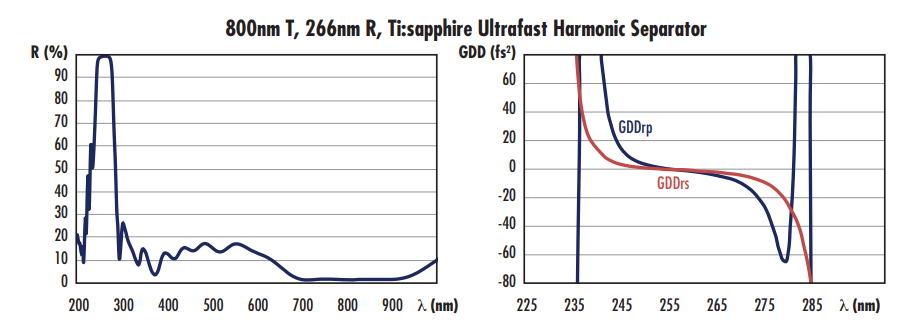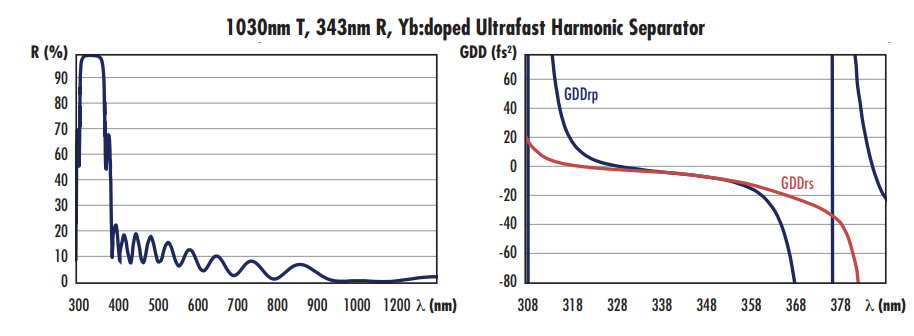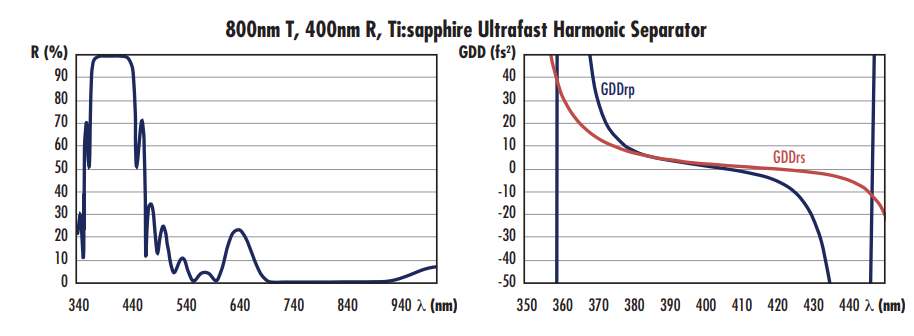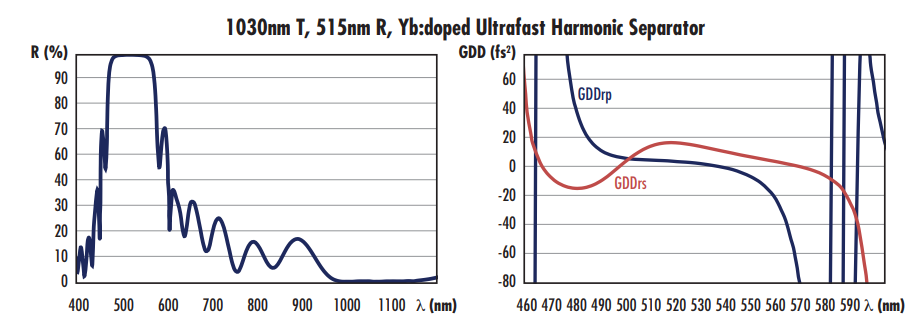
 TECHSPEC® components are designed, specified, or manufactured by Edmund Optics. Learn More
TECHSPEC® components are designed, specified, or manufactured by Edmund Optics. Learn More
TECHSPEC® Ultrafast Harmonic Separators, also known as Ultrafast Harmonic Beamsplitters, are used to reflect the second or third harmonic of femtosecond lasers while transmitting the fundamental pulse. The reflective surface is designed to have high reflectivity and a low Group Delay Dispersion (GDD) of ±20fs2 to minimize pulse dispersion. The back surface is coated with an anti-reflection coating to enhance the transmission of the fundamental light. TECHSPEC Ultrafast Harmonic Separators provide low wavefront distortion and feature high quality, thin UV fused silica substrates with 10-5 surface quality. Designs for separating the harmonics of 800nm and 1030nm (Ti:sapphire and Yb:doped fiber) lasers are available.
Please contact us if your application requires an Ultrafast Harmonic Separator designed for custom wavelengths.




1-800-363-1992
or view regional numbers
QUOTE TOOL
enter stock numbers to begin
Copyright 2025, Edmund Optics Singapore Pte. Ltd, 18 Woodlands Loop #04-00, Singapore 738100
California Consumer Privacy Acts (CCPA): Do Not Sell or Share My Personal Information
California Transparency in Supply Chains Act